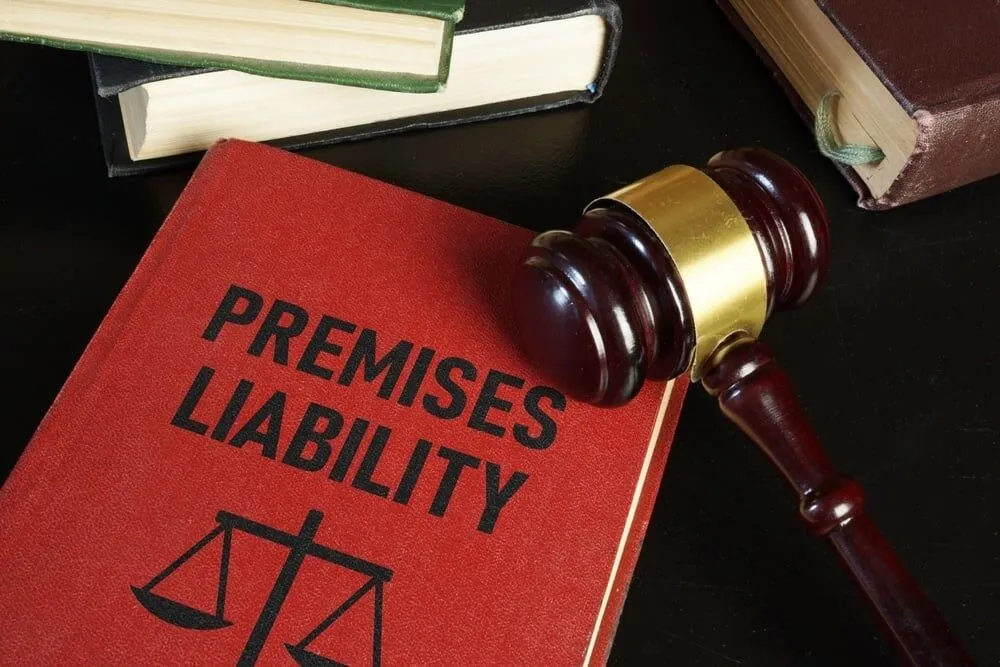Evolution of Landowner Duties
The duties of landowners in asbestos cases have changed a lot over the years. Originally, these duties were based on English common law, where the status of the person on the property determined the duty owed. However, the landmark case of Rowland v. Christian in 1968 changed this. The court decided that landowners owe a duty of reasonable care to everyone, no matter their status. This decision has had a big impact on modern premises liability cases.
Impact of Rowland v. Christian
The Rowland v. Christian case is a cornerstone in premises liability law. Before this case, the duty of care a landowner owed depended on whether the person was a trespasser, licensee, or invitee. The court’s decision in this case made it clear that landowners must exercise reasonable care for all visitors. This ruling has led to more lawsuits against landowners, including those involving asbestos exposure.
Fact-Specific Defenses in Modern Cases
In today’s asbestos litigation, defenses often depend on the specific facts of each case. Landowners can argue that they took all reasonable steps to prevent asbestos exposure. They might also claim that the plaintiff’s exposure happened elsewhere. These fact-specific defenses are crucial in modern asbestos cases, as they can significantly affect the outcome.
Rising Filings Against Peripheral Defendants
In recent years, there has been a noticeable increase in asbestos litigation targeting peripheral defendants. These defendants, often not directly involved in the manufacturing or handling of asbestos, are now facing a surge in lawsuits. This trend is reshaping the landscape of asbestos litigation and bringing new challenges to the forefront.
Increase in Premises Liability Cases
One significant development is the rise in premises liability cases. Plaintiffs are increasingly targeting property owners, alleging that they failed to maintain safe environments, leading to asbestos exposure. This shift is partly due to the disconnect between the asbestos tort and trust compensation systems, which has inflated the perceived liability of these peripheral defendants.
Vulnerability of Industrial Plant Owners
Industrial plant owners are particularly vulnerable to these lawsuits. Many plants used asbestos-containing materials in their construction and operations, making them prime targets for litigation. The historical use of asbestos in these settings has left a legacy of potential exposure, which plaintiffs’ attorneys are now exploiting.
Defense Strategies for New Defendants
As new defendants face these rising filings, they must develop effective defense strategies. Key approaches include:
- Challenging the causation: Defendants can argue that the plaintiff’s asbestos-related illness was not caused by exposure on their premises.
- Highlighting compliance with regulations: Demonstrating adherence to safety standards and regulations can help mitigate liability.
- Utilizing fact-specific defenses: Tailoring defenses to the specific circumstances of each case can be crucial in reducing liability.
Overall, the increase in filings against peripheral defendants is a significant trend in asbestos litigation, requiring new strategies and approaches to navigate the evolving legal landscape.
Emerging Theories of Liability in Asbestos Cases
Bystander and Take-Home Exposure
In recent years, courts have seen an increase in cases involving bystander and take-home exposure. These cases argue that individuals who did not work directly with asbestos, but were exposed through family members or by being near asbestos work, should also be able to claim damages. This theory expands the scope of who can be considered a victim of asbestos exposure.
The New ‘Amosite’ Defendants
A new trend in asbestos litigation is the targeting of ‘Amosite’ defendants. These are companies that may not have directly manufactured asbestos products but are still being held liable because they owned or operated facilities where asbestos was present. This shift is partly due to the ever-evolving concept of duty in the legal landscape.
Evolving Judicial Perspectives on Duty
Judicial perspectives on what constitutes a duty of care in asbestos cases are changing. Courts are increasingly willing to consider fact-specific defenses and are more open to hearing cases that involve indirect exposure. This trend reflects a broader, more inclusive understanding of who might be affected by asbestos and who should be held responsible.
These emerging theories of liability are reshaping the landscape of asbestos litigation, making it possible for more victims to seek justice and for new defendants to be held accountable.
Challenges in Asbestos Litigation
Fading Witness Memories
One of the biggest challenges in asbestos litigation is the fading memories of witnesses. Asbestos exposure often occurred decades ago, making it hard for witnesses to recall specific details. This can weaken the case, as precise recollections are crucial for establishing facts.
Reliance on Historical Records
Given the long latency period of asbestos-related diseases, historical records become vital in these cases. Lawyers often depend on old documents, such as employment records and union lists, to piece together exposure histories. However, these records can be incomplete or lost over time, complicating the litigation process.
Sympathetic Judiciary Trends
Another challenge is the trend of a sympathetic judiciary. Courts may be more inclined to side with plaintiffs due to the severe health impacts of asbestos exposure. This can make it harder for defendants to win cases, even when they have strong defenses.
Duties and Defenses of Landowners
In asbestos litigation, landowners have specific duties and defenses that can significantly impact the outcome of cases. These duties and defenses are shaped by various legal principles and precedents.
Employer and Landowner Duties
Landowners, especially those who are also employers, have a duty to ensure their premises are safe. This includes taking steps to prevent exposing tenants to asbestos, a known hazardous material. The duty arises from their control over the property and their knowledge of any dangerous conditions. They must protect not only their employees but also independent contractors and their families from asbestos exposure.
Exceptions to Governmental Immunity
Government entities often have immunity from certain lawsuits, but there are exceptions. If a government landowner retains control over the work being done and fails to ensure safety, they can be held liable. This is particularly relevant in cases where asbestos exposure occurs due to the government’s negligence in maintaining safe conditions.
Traditional Defenses in Asbestos Litigation
Landowners have several traditional defenses available in asbestos litigation:
- Exclusive Remedy: This defense argues that workers’ compensation is the sole remedy for employees exposed to asbestos at work.
- Statute of Repose: This limits the time within which a lawsuit can be filed, often protecting landowners from claims related to older asbestos exposure.
- Assumption of Risk: If the danger of asbestos was obvious and the plaintiff chose to proceed, this defense might apply.
- Non-liability for Independent Contractors: Generally, landowners are not liable for the negligence of independent contractors they hire, unless they retained control over the work.
Understanding these duties and defenses is crucial for both plaintiffs and defendants in asbestos litigation.
Impact of Construction Statutes of Repose
State-Specific Statutes and Their Viability
Construction statutes of repose (CSoR) are laws that limit the time within which a lawsuit can be filed after the completion of a construction project. These statutes are designed to protect construction professionals and property owners from indefinite liability. However, the viability of these statutes in asbestos cases is a contentious issue. Despite the long latency period of asbestos-related diseases, many courts have upheld CSoRs, making it difficult for plaintiffs to pursue claims decades after exposure. States like Illinois, Indiana, and Pennsylvania have seen significant legal battles over this issue.
Challenges to Statutes in Asbestos Cases
One of the main challenges to CSoRs in asbestos litigation is the delayed onset of asbestos-related diseases. Plaintiffs often argue that it is unfair to bar claims when the disease manifests long after the statute of repose has expired. Courts have been reluctant to overturn these statutes, but there have been notable exceptions. For instance, in Indiana, the defense was restricted following the Gill v. Evansville Sheet Metal Works case in 2012. Similarly, Illinois faced a constitutional challenge to its 2015 amendment.
Recent Court Decisions
Recent court decisions have further shaped the landscape of CSoRs in asbestos cases. In Myers v. Crouse-Hinds, the Indiana Supreme Court upheld the statute of repose, but with significant limitations. This decision has influenced how other states interpret their own statutes. In Pennsylvania, the courts have consistently upheld CSoRs, but with growing dissent. These recent developments indicate a trend towards more nuanced applications of the law, balancing the interests of plaintiffs and defendants.
Neighborhood Exposure Claims
Key Cases and Legal Precedents
Neighborhood exposure claims have become a significant area of asbestos litigation. Notable cases include Boyer v. Weyerhaeuser Co., where the court denied a motion for summary judgment because the plaintiff lived within one mile of the plant. Another important case is Gough v. Rogers Corp., where the decedent lived two miles away but was not found to be a proximate cause of asbestos exposure.
Proximity and Exposure Evidence
Proving neighborhood exposure often hinges on the proximity of the plaintiff’s residence to the asbestos source. Courts have generally required plaintiffs to live within a certain distance, often less than a mile, to establish a credible claim. Air sampling tests and historical data are frequently used to support these claims.
Challenges in Proving Causation
One of the main challenges in neighborhood exposure claims is proving causation. Plaintiffs must demonstrate that their asbestos-related illness directly resulted from exposure in their neighborhood. This often involves gathering extensive evidence and expert testimony to establish a clear link between the source of asbestos and the plaintiff’s condition.




